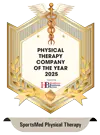Possibly the most common of knee injures is a ligament tear or strain. The knee has four main ligaments – Anterior Cruciate Ligament (ACL), Posterior Cruciate Ligament (PCL), Medial Collateral Ligament (MCL), and Lateral Collateral Ligament (LCL). These ligaments provide stability for the knee joint and help keep its bones in place.
MCL Injury to ligaments, sprains, and are categorized as follows:
- Grade 1 – Little damage, mostly due to being over stretched. Still has ability to provide stability.
- Grade 2 – Overstretched and partially torn ligament.
- Grade 3 – Complete tear of the ligament and it is no longer able to provide stability.
In this article we will cover the MCL, a collateral ligament, and the effect an MCL injury has on the knee joint. There are two collateral ligaments – Medial Collateral Ligament (MCL) and Lateral Collateral Ligament (LCL). These ligaments provide lateral stability for the knee and prevent valgus (inward collapse) or varus (outward bowing). The MCL is located on the inside of the knee and connects the femur (thighbone) to the tibia (shinbone). The LCL is on the outside connecting the femur to the fibula (calf bone).
The MCL
Of the two, the MCL is most likely to be injured. Strains normally occur from an outside blow to the knee that cause and inward collapse known as a valgus. Similar to the ACL, the MCL is commonly injured in sports that involve bending, twisting, and quick changes in direction such as football and soccer. An MCL injury usually happens in conjunction with other soft tissue damage. In fact, it most commonly occurs with a partial or total tear of the ACL and injury to the meniscus known as The Unhappy Triad.
Symptoms
- Pain
- Stiffness
- Swelling
- Tenderness on inside of knee
- Difficulty in certain ranges of motion (ROM)
- Unstable Knee
- Trouble with weight bearing
MCL Recovery
An MCL recovery require the use of a brace to keep the knee stable. Even for Grade 3 strains, the MCL will rarely require surgery. Normally, wearing a brace and focusing on leg strengthening exercises will allow for it to heal over time. The duration is dependent on the severity of the strain and the consistency of exercises performed. Care should be taken to not place much weight on the injured leg unless instructed to do so by a medical professional. Recovery will come in stages, each with standards that must be met before proceeding.
Phase I
In this phase of MCL recovery, the main goal is to reduce pain and inflammation. If in a brace and using crutches, before moving on to phase II you need to be able to walk normally with no pain.
Phase II
Strengthening exercises are introduced and you want to accomplish full knee range of motion (ROM) with no pain. Before moving onto phase III, there has to be little to no pain or swelling and you must be able to walking with no pain and at varying speeds.
Phase III
More advanced strengthening exercises are introduced with the goal of being able to do weight bearing exercises with no pain. To move on to IV, you must have little to no swelling and have no pain unless the movements are advanced. Some keep the brace on only while exercising.
Phase IV
The goal of this phase of MCL recovery is to restore you back to normal life. If an athlete, this phase prepares you to go back to sport. More advanced strengthening exercise with the introduction of single leg weight bearing exercises.
Usually, one to two weeks is enough per phase but the actual length is determined by how long it takes you to reach the goal for that phase.
In need of MCL Recovery Rehabilitation? Schedule an Appointment Today!
If you have any questions, or want a consultation with a professional, feel free to call, or schedule an appointment online at any of our Bergen County or Passaic County offices in New Jersey. Choose from Glen Rock, Franklin Lakes, Fair Lawn, Ho-ho-kus/Ridgewood, and/or Clifton – we make it possible for you to visit any of our offices at your convenience.
Common Exercises for MCL Recovery:
Leg Extensions
[youtubeVideo id=”sn8u6C2fSs8″ height=”250″ /]
Feet Elevated Bridges (Hamstring Bridge)
[youtubeVideo id=”QYZG_U8cmek” height=”250″ /]
Single Leg Balance
[youtubeVideo id=”rOtpKUS54pk” height=”250″ /]
Leg Press (More Advanced)
[youtubeVideo id=”m-Z8esB2A5U” height=”250″ /]
NOTE: Always do exercises in the ROM that does not cause pain. Seek the help a physical therapist(like us) to help you determine how much to do.
Do you, or someone you know need MCL Injury rehabilitation? We can help you with a simple consultation.



